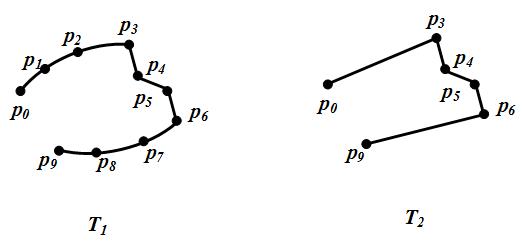I am currently doing an assignment on how to compress a trajectory. Given a trajectory T1 in figure 1, and I want to get a compressed version as T2. For segments p0~p3 and p6~p9 in T2, I can obtain them using traditional line simplification algorithms, such as Douglas-Peucker algorithm. However, in my opinion, segment p3~p6 is very important for further analysis, so, I want to preserve this part while compression T1.
How can I do it?
Segment p3~p6 can be called fluctuant part. It is composited with points that with relative slower speed and continuous direction changes. May be there are any other accurate definitions to describe this part.

